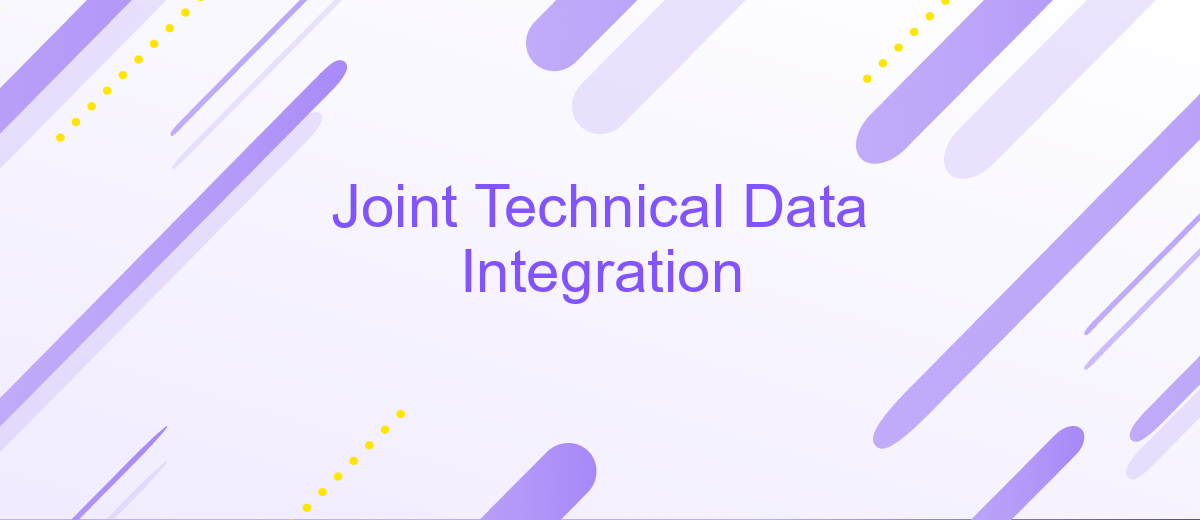Joint Technical Data Integration
Joint Technical Data Integration (JTDI) represents a transformative approach to managing and utilizing technical data across various platforms and organizations. By enabling seamless sharing and synchronization of information, JTDI enhances operational efficiency, reduces redundancy, and ensures that critical data is accessible when and where it is needed. This article delves into the principles, benefits, and implementation strategies of JTDI, highlighting its pivotal role in modern data management.
Introduction
Joint Technical Data Integration (JTDI) is a critical process in modern organizations, enabling seamless data flow across various systems and platforms. By integrating technical data, companies can achieve better efficiency, accuracy, and decision-making capabilities. This process is essential for maintaining a competitive edge in today's data-driven world.
- Enhanced data accuracy and consistency
- Streamlined workflows and processes
- Improved decision-making and analytics
- Reduced operational costs
One of the key tools facilitating JTDI is ApiX-Drive. This service simplifies the integration process by allowing users to connect various applications and automate data transfers without requiring extensive technical knowledge. ApiX-Drive supports numerous platforms, making it a versatile solution for businesses looking to optimize their data integration efforts. By leveraging such tools, organizations can ensure that their technical data is efficiently managed and utilized to its fullest potential.
Background: Data Integration Challenges in Joint Environments

Data integration in joint environments presents unique challenges due to the complexity and diversity of data sources involved. Organizations often struggle with disparate data formats, inconsistent data quality, and varying data governance policies. These issues can hinder the seamless exchange and utilization of data, leading to inefficiencies and potential errors in decision-making processes. Effective data integration requires robust strategies and tools capable of harmonizing data from multiple sources while ensuring accuracy and consistency.
One effective solution for addressing these challenges is the use of integration platforms like ApiX-Drive. This service simplifies the process of connecting various data sources and automating data flows, reducing the manual effort required for data integration. ApiX-Drive supports a wide range of applications and services, enabling organizations to streamline their data integration processes and improve overall data management. By leveraging such tools, organizations can overcome the inherent complexities of joint data environments, ensuring that data is readily accessible and reliable for all stakeholders.
JTDI Framework and Architecture

The Joint Technical Data Integration (JTDI) framework is designed to streamline the process of integrating diverse technical data sources into a unified system. This architecture emphasizes modularity, scalability, and interoperability, ensuring that various components can work seamlessly together. By leveraging modern technologies and best practices, JTDI provides a robust platform for data exchange and collaboration.
- Data Source Integration: JTDI supports the integration of multiple data sources, including databases, APIs, and file systems.
- Data Transformation: The framework includes tools for transforming data into a consistent format, making it easier to analyze and utilize.
- Data Storage: Centralized storage solutions within JTDI ensure that data is accessible and secure.
- API Management: Services like ApiX-Drive facilitate the integration of various APIs, enabling seamless data flow between systems.
- Scalability: The architecture is designed to scale efficiently, accommodating growing data volumes and increasing user demands.
By incorporating services such as ApiX-Drive, JTDI enhances its capability to connect with a wide range of APIs, simplifying the process of data integration. This not only reduces the time and effort required to set up integrations but also ensures that data remains consistent and reliable across all connected systems. Overall, JTDI provides a comprehensive solution for managing technical data in a cohesive and efficient manner.
JTDI Capabilities and Benefits

Joint Technical Data Integration (JTDI) offers a comprehensive approach to streamline and synchronize technical data across various platforms. This capability ensures that all stakeholders have access to accurate and up-to-date information, which is critical for decision-making processes.
One of the primary benefits of JTDI is its ability to enhance collaboration among different departments and teams. By integrating data from multiple sources, organizations can achieve a unified view of their technical information, reducing redundancies and discrepancies.
- Improved data accuracy and consistency
- Enhanced collaboration and communication
- Streamlined workflows and processes
- Reduced operational costs
- Faster decision-making
Services like ApiX-Drive can be instrumental in setting up these integrations. ApiX-Drive facilitates seamless data transfer between various systems, ensuring that technical data is consistently updated and accessible. This not only saves time but also minimizes the risk of errors, making JTDI an invaluable asset for any organization looking to optimize its technical data management.


Conclusion
In conclusion, the integration of joint technical data is pivotal for enhancing operational efficiency and ensuring seamless data flow across various platforms. By leveraging advanced integration services, such as ApiX-Drive, organizations can automate data synchronization, reduce manual errors, and improve overall data accuracy. This not only streamlines workflows but also fosters better decision-making by providing real-time access to critical information.
Moreover, the implementation of robust integration solutions empowers businesses to stay competitive in an increasingly data-driven landscape. ApiX-Drive, with its user-friendly interface and extensive compatibility with numerous applications, exemplifies how modern integration tools can simplify complex data management tasks. As organizations continue to evolve, embracing these technologies will be essential for maintaining agility and achieving long-term success.
FAQ
What is Joint Technical Data Integration (JTDI)?
Why is JTDI important for organizations?
What are the common challenges faced in JTDI?
How can automation tools help in JTDI?
What are the best practices for implementing JTDI?
Apix-Drive will help optimize business processes, save you from a lot of routine tasks and unnecessary costs for automation, attracting additional specialists. Try setting up a free test connection with ApiX-Drive and see for yourself. Now you have to think about where to invest the freed time and money!

